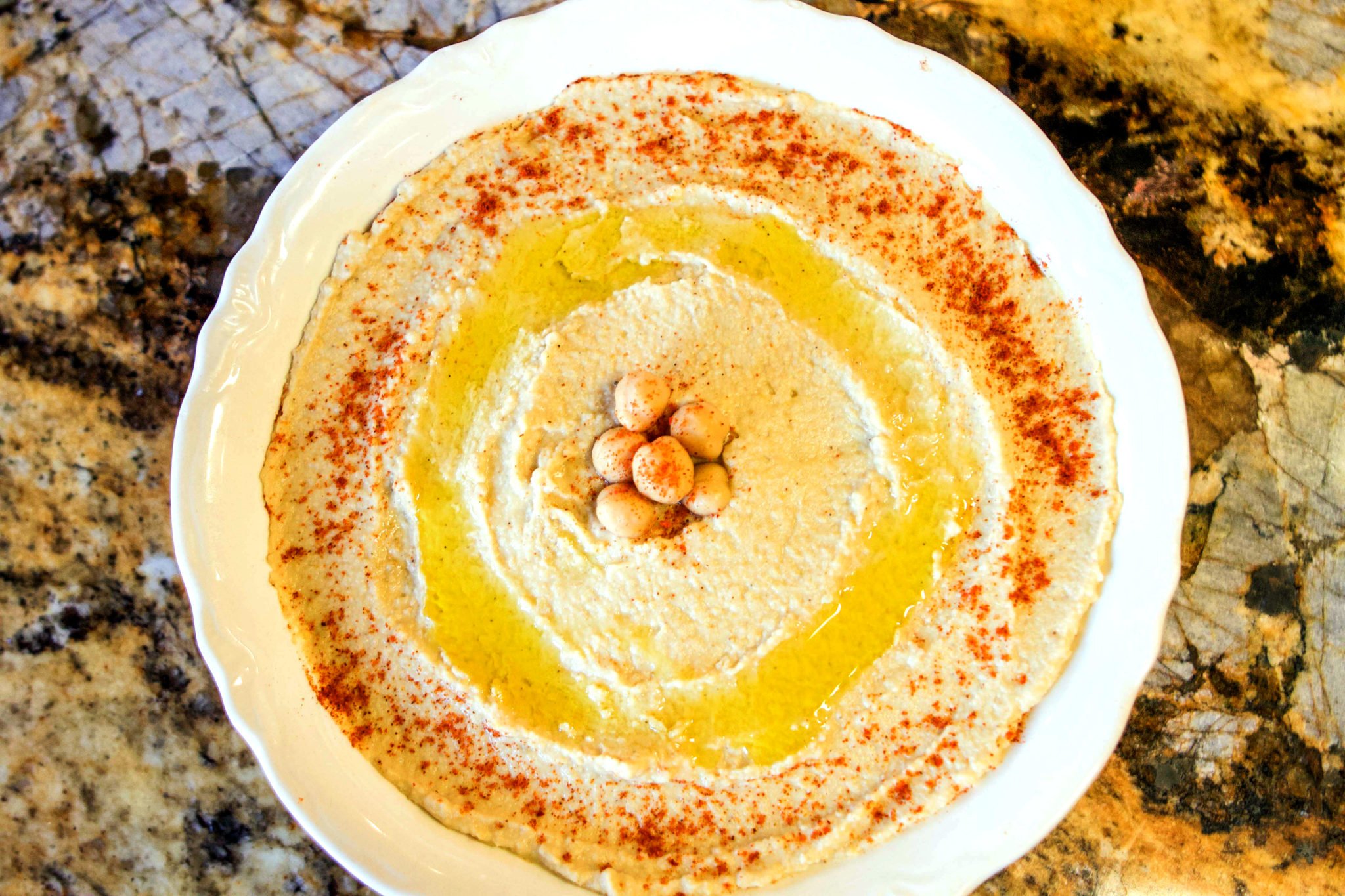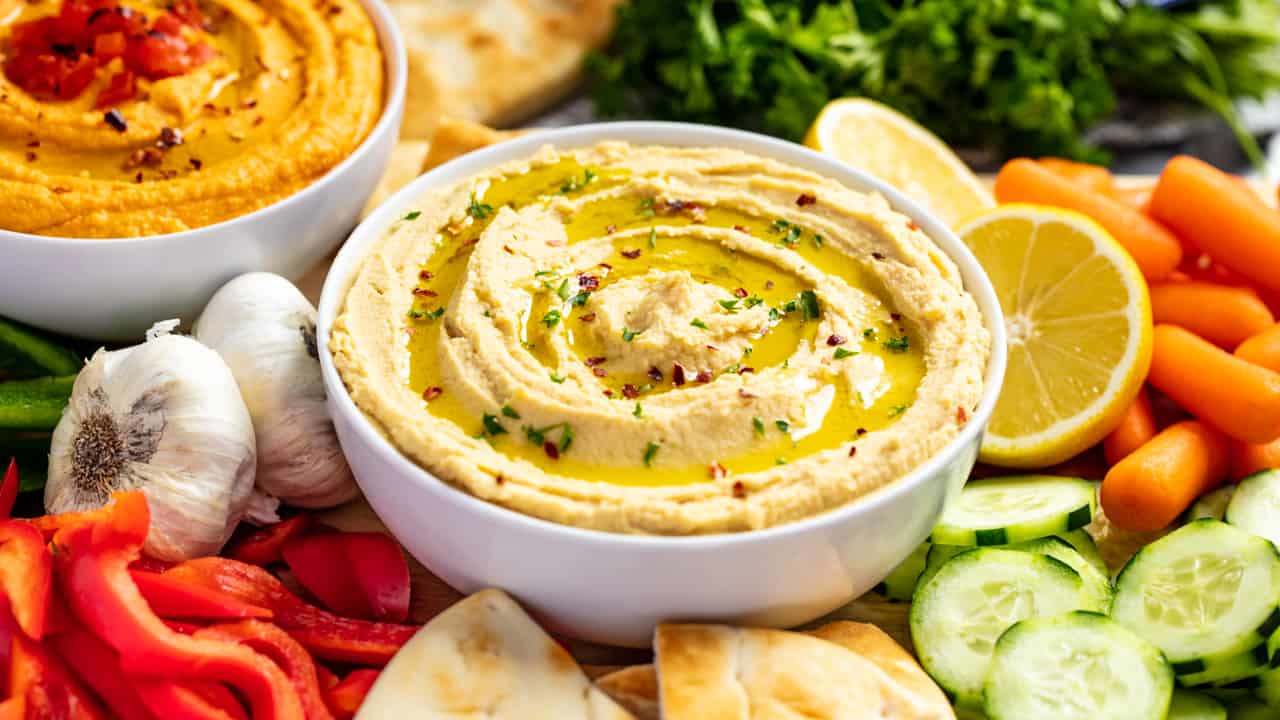Hummus, a beloved Middle Eastern dip, has captivated taste buds for centuries, transcending cultural boundaries and culinary traditions. Its smooth, creamy texture and vibrant flavors have earned it a prominent place in kitchens and dining tables worldwide. Embarking on a culinary adventure, this guide unveils the secrets of crafting authentic hummus, exploring its ingredients, preparation methods, flavor profiles, and cultural significance.
From the humble origins of its primary ingredient, the chickpea, to the vibrant tapestry of spices and seasonings that enhance its taste, hummus is a testament to the power of culinary alchemy. Join us as we delve into the art of creating this delectable dip, uncovering its versatility as an appetizer, dip, or spread, and discover its nutritional prowess as a healthy and satisfying addition to any diet.
Ingredients
To prepare an authentic hummus, a few essential ingredients are required, each playing a crucial role in achieving its distinctive flavor and texture.
The foundation of hummus is chickpeas, also known as garbanzo beans. They provide a rich, nutty base and contribute to the creamy consistency. Tahini, a sesame seed paste, adds a nutty, earthy flavor and helps bind the hummus together. Extra virgin olive oil enhances the overall flavor profile and imparts a smooth texture.
Lemon juice adds a refreshing acidity, balancing the richness of the other ingredients. Cumin and paprika are common spices used to season hummus, providing warmth and depth of flavor.
Variations
Variations in hummus ingredients exist based on regional preferences and personal tastes. Some variations include:
- Adding roasted red peppers for a smoky and vibrant flavor.
- Incorporating garlic for a pungent and savory note.
- Using different types of beans, such as black beans or fava beans, for a unique flavor profile.
- Substituting tahini with other nut butters, such as almond butter or cashew butter.
- Adding fresh herbs, such as cilantro or parsley, for an aromatic touch.
Preparation Methods
Crafting authentic hummus from scratch is a culinary endeavor that demands patience and precision. The journey begins with soaking dried chickpeas overnight, allowing them to rehydrate and soften. Once soaked, the chickpeas are meticulously cooked until tender, their texture yielding to the gentle pressure of a fork.
Blending Techniques
Achieving the desired texture and consistency of hummus is an art form. The traditional method involves using a mortar and pestle, a time-honored technique that allows for a gradual release of the chickpeas’ natural oils and flavors. Alternatively, a food processor or high-powered blender can be employed, offering a more efficient approach that requires less manual effort.
Regardless of the method chosen, the key to a smooth and velvety hummus lies in blending the chickpeas until they reach a creamy consistency. This may require adding small amounts of water or aquafaba (the liquid from canned chickpeas) to facilitate the blending process.
Seasoning and Finishing Touches
Once the hummus has reached the desired consistency, it is time to infuse it with a symphony of flavors. Tahini, a paste made from roasted sesame seeds, provides a nutty richness that is the hallmark of authentic hummus. Garlic, lemon juice, and cumin add depth and complexity to the palate, while salt and pepper balance the flavors and bring everything together.
The final touch is a drizzle of high-quality olive oil, which adds a glossy sheen and enhances the hummus’s overall appeal. A sprinkle of paprika or fresh herbs, such as parsley or cilantro, can provide a vibrant garnish and add an extra layer of flavor.
Flavor Profiles
Authentic hummus is renowned for its distinctive flavor profile that balances acidity, saltiness, and richness. Its taste is characterized by a subtle nuttiness from the chickpeas, a tangy brightness from the lemon juice, a hint of saltiness, and a subtle warmth from the tahini.
Key Spices and Seasonings
The key spices and seasonings that contribute to the flavor of hummus include:
- Cumin: Adds a warm, earthy flavor.
- Paprika: Provides a slightly sweet and smoky taste.
- Garlic: Imparts a savory and aromatic flavor.
- Tahini: A nutty and creamy paste made from sesame seeds, it adds richness and a smooth texture.
- Lemon Juice: Balances the richness with its acidity and freshness.
- Salt: Enhances the flavors and brings out the sweetness of the chickpeas.
Balance of Acidity, Saltiness, and Richness
The balance between acidity, saltiness, and richness is crucial in creating a harmonious flavor profile. The acidity from the lemon juice brightens the hummus and cuts through the richness of the tahini. The saltiness enhances the flavors and balances the acidity.
The tahini adds a nutty richness that brings the flavors together.
Variations in Flavor
Variations in flavor exist based on different regions or culinary traditions. Some common variations include:
- Lebanese hummus: Typically has a smooth texture and a strong garlic flavor.
- Syrian hummus: Known for its creamy texture and a hint of sweetness from paprika.
- Greek hummus: Often incorporates roasted red peppers or feta cheese, adding a smoky or tangy flavor.
- Israeli hummus: Characterized by a coarse texture and a generous use of cumin.
Serving Suggestions

Authentic hummus shines as a versatile culinary creation that can elevate various culinary experiences. Whether as an appetizer, dip, or spread, its creamy texture and flavorful depth offer endless possibilities.
As an appetizer, hummus takes center stage with its inviting appearance. Served in a shallow bowl, its smooth surface can be adorned with a drizzle of olive oil, a sprinkling of paprika, and a few chopped parsley leaves. Accompany it with warm pita bread or crispy crackers for dipping, allowing guests to savor its richness.
As a Dip
- For a delightful vegetable platter, hummus becomes the star dip. Arrange an assortment of fresh vegetables, such as crisp carrots, crunchy celery sticks, sweet bell peppers, and tender cucumbers, around the hummus. The vibrant colors and textures of the vegetables create a visually appealing display, inviting guests to indulge.
- Hummus also pairs wonderfully with grilled or roasted vegetables. Skewers of tender zucchini, juicy tomatoes, and smoky eggplant, served alongside hummus, offer a flavorful and satisfying combination. The smokiness of the vegetables complements the earthy notes of the hummus, creating a harmonious balance of flavors.
As a Spread
Hummus transforms into a versatile spread, adding richness and flavor to sandwiches, wraps, and salads. Spread it generously on toasted bread, pita pockets, or tortillas, and top with your favorite fillings. Whether it’s grilled chicken, roasted vegetables, or fresh herbs, the hummus provides a creamy base that binds the ingredients together.
In salads, hummus adds a creamy touch and a boost of protein. Drizzle it over a bed of mixed greens, quinoa, or roasted vegetables. The hummus dressing enhances the flavors of the salad, creating a satisfying and nutritious meal.
Cultural Significance

Hummus, a delectable spread, holds profound historical and cultural significance in various cuisines worldwide. Its origins can be traced back to ancient Egypt, where it was a staple food and was believed to sustain pharaohs and laborers alike.
Over the centuries, hummus spread throughout the Middle East, North Africa, and the Mediterranean region, becoming an integral part of local culinary traditions. In the Levant, hummus is a cherished dish served at social gatherings, weddings, and religious festivals. It symbolizes hospitality, generosity, and community.
Regional Variations
Hummus has undergone regional variations, reflecting the diverse culinary influences of its adopted homelands. In Lebanon, hummus is often garnished with pine nuts and parsley, while in Syria, it is frequently topped with ground lamb or beef. In Greece, hummus is known as “houmous” and is often served with pita bread or vegetables.
Symbolism and Traditions
In many cultures, hummus carries symbolic meanings. In Egypt, it is believed to bring good fortune and is often served at weddings and other auspicious occasions. In Morocco, hummus is considered a symbol of fertility and is served to expectant mothers.
Health Benefits
Hummus is a nutritionally dense food, packed with essential nutrients that contribute to a balanced and healthy diet. It is a rich source of:
- Protein: Hummus is a plant-based protein source, providing essential amino acids for muscle growth and repair.
- Fiber: The chickpeas and tahini in hummus provide dietary fiber, which promotes satiety, regulates blood sugar levels, and supports digestive health.
- Vitamins and Minerals: Hummus is a good source of vitamins and minerals, including iron, folate, zinc, and magnesium, which are essential for overall health and well-being.
Heart Health
Hummus contains monounsaturated and polyunsaturated fats, which have been linked to reduced risk of heart disease. These fats help lower LDL (bad) cholesterol and raise HDL (good) cholesterol, improving heart health.
Antioxidant Properties
Hummus is rich in antioxidants, such as polyphenols and vitamin E, which help protect cells from damage caused by free radicals. Antioxidants have been linked to reduced risk of chronic diseases, including heart disease, cancer, and neurodegenerative disorders.
Last Point
Hummus, a culinary masterpiece that has stood the test of time, continues to tantalize taste buds and enrich culinary traditions. Its versatility, health benefits, and captivating flavors make it a beloved dish that transcends cultural boundaries. Whether enjoyed as a dip, spread, or appetizer, hummus is a testament to the power of simple ingredients transformed into a culinary delight.
As we bid farewell to this exploration of authentic hummus, may your future culinary endeavors be filled with the same passion and joy that has fueled this journey.
FAQ Summary
What is the secret to achieving the perfect hummus texture?
The key to achieving the perfect hummus texture lies in the balance of ingredients and the technique used. Soaking the chickpeas overnight ensures they cook evenly and become tender, while using a food processor or blender allows for precise control over the consistency.
Patience and attention to detail are essential, as over-processing can result in a grainy texture.
How can I customize my hummus to suit my taste preferences?
Customizing hummus to your taste preferences is a delightful aspect of its versatility. Experiment with different ratios of tahini, lemon juice, and spices to find the perfect balance of flavors. Adding roasted red peppers, sun-dried tomatoes, or herbs can introduce new dimensions of taste and create unique variations.
What are some creative ways to serve hummus?
Hummus offers endless possibilities for creative serving. Use it as a dip for pita bread, vegetable crudités, or crackers. Spread it on sandwiches, wraps, or burgers for a flavorful and nutritious addition. As a topping for grilled meats, roasted vegetables, or salads, hummus adds a creamy and tangy touch.
